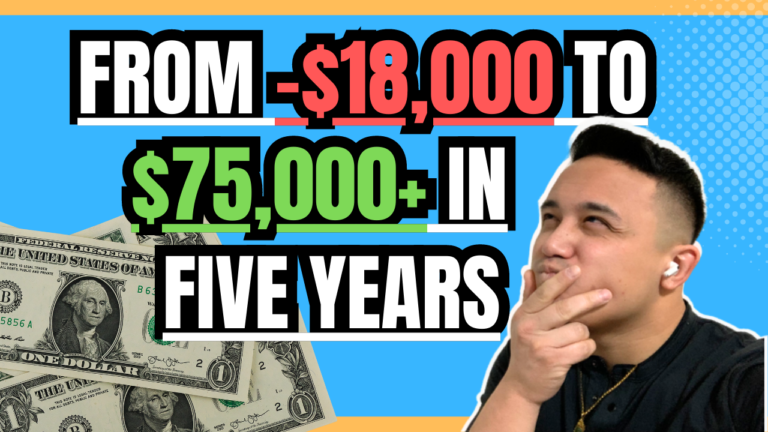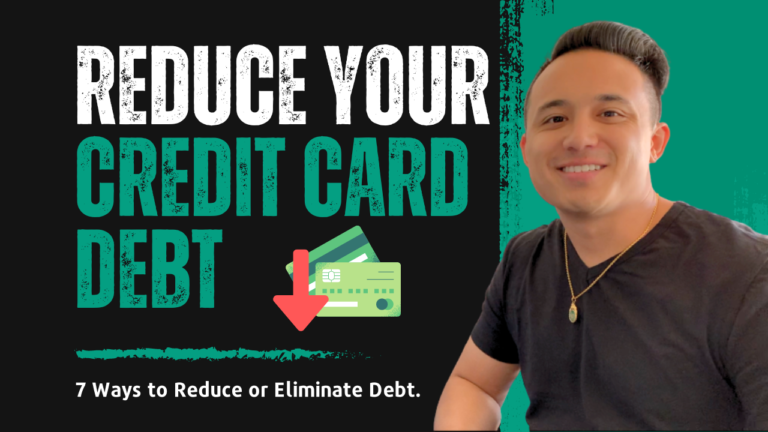What is credit card point hacking?

One of the things that you probably have learned about me is that I am a nerd when it comes to credit card points.
And I can remember the reason why like it was yesterday…
It was 2015 and I had just received a combined 120,000 bonus sign-up points from my first two credit cards.
Within 15 months, I was on my first international business-class flight to Asia – paying less than $100 for taxes and fees.
I was hooked.
But this wasn’t always my thinking.
In fact, I grew up watching my family members use their credit cards…
…and then complain about how much the credit card companies are charging in interest.
My old way of thinking was simple: avoid credit cards because they are bad.
My new way of thinking: If I’m going to spend $1, I’m going to get the most back I can for it.
What is credit card point hacking?
If you aren’t the most technical person, it’s okay – this has nothing to do with computer hacking.
Credit card point hacking is when someone uses a credit card or multiple credit cards to optimize the points received from using the card.
When you are looking at the various ways you can buy something, you probably think about:
- Cash. This one takes no explanation. But one thing to keep in mind here is that when you spend cash, you receive what you are paying for – and that is it. There is nothing received from the action of each dollar that is spent.
- Debit card. When you open a checking account, you may have the option of receiving a debit card. This allows you to spend the amount that is within the account without needing to withdraw it to cash first. There are some companies experimenting with debit card rewards, but generally, again, there is nothing received from the action of each dollar spent.
- Credit card. Now, this may not be as easy to get as the other two options, however, if used in a certain way – you will be rewarded for the action of each dollar spent. This is the largest difference between a credit card vs. cash/debit. Sure, you’ll also build a credit score as well, but that’s just a side perk. There are also charge cards, like some American Express products, which are slightly different than credit cards but for simplicity – we’ll include those along with credit cards for now.
Example: Let’s say you spent $1,000 eating out over the past two months going to your favorite restaurants and coffee shops.
| Payment Method | Amount Spent | Reward | Reward Value | Point Redemption Value | Total Return |
|---|---|---|---|---|---|
| Cash | $1,000 | – | – | – | $0 |
| Debit | $1,000 | – | – | – | $0 |
| Discover It (Cashback Card) | $1,000 | 5% | $50 | – | $50 |
| Chase Sapphire Reserve (Point Card) | $1,000 | 3% | $30 (or 3,000 points) | $0.03/point | $90 |
The sample scenario shows how using different payment methods can yield different rewards.
Now imagine these rewards across the amount you spend in other categories like travel or shopping, but not just for this small time frame – but over the span of months or years…
…It’s a substantial amount of rewards!
How do you earn credit card points?
There are usually two categories that most credit cards will fall in:
- Cashback Reward Credit Cards
- Point Reward Credit Cards
Cashback Reward Credit Cards
These are the credit cards where you’ll see a promotion like 1% Cashback for every $1 you spend or with a sign-up bonus like Get $500 back when you open a card with us!
Yes! Getting cashback for every $1 you spend is great. But this is NOT what I found to be the best.
With the cashback cards that I have had, like the Chase Freedom credit cards, there are some instances where I found the rewards to be pretty good and this is specifically because the cashback rewards are actually tied to a point redemption system AND have category-specific bonuses.
What is a category-specific bonus?
As you familiarize yourself with different credit cards, you may notice that you may receive a greater number of points or cashback percentages when you spend at specific companies.
For example, the bonus category might be Grocery Stores. So anytime you use that card at a company that the credit qualifies as a grocery store, you may receive 5% cashback instead of the standard 1%.
What are some pros of cashback reward credit cards?
- Typically low (less than $100) or no annual fee
- Receive some rewards vs. little to none with cash or debit alternatives
What are some cons of cashback reward credit cards?
- May have fewer perks & benefits than some other premium cards (i.e. Uber Credit, TSA Pre-check Credit, Extended Purchase Warranty, etc.)
- Rewards can be restricted to only a few categories
How do I use cashback credit cards?
I typically have a cashback credit card because I had downgraded from another credit card with that same financial institution.
An example would be if someone had a Chase Sapphire Reserve card, they might downgrade it to a Chase Freedom card to reduce the cost towards an annual fee while keeping the points they had accumulated with the Chase Sapphire Reserve card.
Point Reward Credit Cards
Now, these are some of my favorite cards!
The Point Reward Cards, especially the more premium cards like Chase Sapphire Reserve and AmEx Platinum, often have larger sign-up bonuses and come with a variety of benefits.
I do have to warn you, that some of these cards can have annual fees of $600+ per year…
…but depending on your standard of living, that annual fee will cover itself.
What do I mean that it’ll cover itself?
Some of the card benefits include things like monthly Uber (or UberEats) credit, airline credits, streaming service credits, and other bonuses that I personally would have spent on throughout the year anyways. So it’s almost a wash for me to pay it in an annual fee where I’ll also receive other benefits vs. paying it directly.
The key to remember here is this: DO NOT INFLATE YOUR SPEND TO JUSTIFY THE BENEFITS.
If you are already spending it as part of your lifestyle, then sure consider it.
We want to avoid situations like “OMG I saved $100 on this jacket”...🤩
…but still spent $100 (after the discount), which you may not have actually needed to spend at all. 😒
So, these cards have benefits – great – what else?
I’ve found that these cards also typically have larger bonuses with their spend categories.
One year I remember getting like 15x points for Lyft (at the time I was traveling A LOT so this was nice),
or receiving 10x on Gas and Groceries.
Besides paying for rent – that basically covers most of my spending every month.
What are some pros of point reward credit cards?
- Have benefits & perks that can subsidize spending or improve lifestyle (like FREE access to airport lounges or upgrades at hotels)
- Can receive larger category-specific rewards and help optimize overall spending
What are some cons of point reward credit cards?
- Will need to keep a closer eye on the management of these cards with their higher annual fees
- Depending on where you shop often, you can run into instances where the card may not be accepted – specifically with American Express.
How do I use reward credit cards?
These are typically my everyday cards.
The cards that I have saved to most of my online shopping accounts, carry in my wallet and have on my iPhone’s Wallet app.
Yes, there are some times one of my cashback cards can beat one of these cards – but that is typically in situations like when those cards might have a bonus for only 3 months of the year in a specific category.
How do you spend credit card points?
The other side of credit card point hacking is how you spend your points.
A key thing to remember is that typically 1 point across most programs will represent $0.01
That means that when you are looking to redeem your points if you aren’t getting at least $0.01 – you maybe be better off making that purchase with ‘cash.’
So what is a good redemption with points?
If you are savvy when you are looking to redeem points – I’ve personally seen upwards of $0.05 – $0.06 per point…
…which can be insane!
I’ve found that the best reward value for points comes through purchasing a business or first-class seat for international flights.
There was one time I was traveling from California, United States to Tanzania where I spent ~120,000 (or $1,200 point value) for a $6,000 roundtrip flight!
It. Was. Worth. It.
There are a ton of areas to dive deep into how to do this, but some things to keep in mind include:
- What brings you the most joy?
- I have some friends that rather get more flights in coach from their points than fewer flights in business class. It’s all individual preferences.
- How much time do you want to spend on credit card hacking?
- Finding the best deal takes time and planning. Sometimes those business-class gems require bookings 8+ months in advance.
- Are you looking for the best value or just offsetting cash spend?
- Some of my friends use their points for purchases when they rather just spend points vs. the cash in their accounts. Which is a great strategy as well!
Bonus: What credit card would I get if I started all over again?
There are so many different cards available, but there are definitely some that are worth taking a deeper look at than others.
I have personally had 10+ credit cards across a number of financial institutions (Chase, American Express, Citi Bank, etc.) and brands (i.e. airlines cards, hotel cards, etc.) and have been able to learn from which I would consider again if I had to start all over…
…and those that I would stay clear away from.
Rather than going the co-branded route where there are bonuses for only one brand (i.e. United Credit Card, Target Credit Card, Nordstrom Credit Card, etc.), I would look for a credit card associated with a large financial institution.
Having your first card with a financial institution that has a variety of transfer partners and redemption portals will provide the greatest amount of flexibility when you are looking to redeem your points.
Now, I haven’t had credit cards from all of the financial institutions, so I can only recommend those cards that I’ve had.
From my experience – if I had to do it over again, I would consider one of my first cards to be from either Chase or American Express.
Chase Credit Cards
Intro: Chase Freedom Cards
- These cards include:
- What makes this card worth it?
- Little to $0 annual fee
- Great redemption portal through Chase Ulitmate Rewards
Mid-Game: Chase Sapphire Preferred (“CSP”)
- What makes this card worth it?
- Would really put this one in the middle of both the Chase Freedom Cards and the end-game card, Chase Sapphire Reserve.
- The lower annual fee is a lot less to manage than the end-game cards
- Some of the benefits and perks that you typically may find with end-game cards
- Note: Chase does have some restrictions regarding their new cardmember sign-up bonus where you can only receive the signup bonus for one of their Chase Sapphire products within a given timeframe. Advice reading the fine print before finalizing a decision.
End-Game: Chase Sapphire Reserve (“CSR”)
- What makes this card worth it?
- Hands down the benefits and perks can make this card worth it by itself.
- Some instances where there is a multiplier when spending your points, so they can go even further!
- What can be a downside to the card?
- High annual fee
- Note: having both end-game cards from Chase and American Express may NOT be worth it. Recommend really evaluating if your spend vs. annual fee makes sense.
American Express Credit Cards
Note: AmEx sign-up bonuses are limited to one time (unlike some others that may allow you to receive another sign-up bonus after a few years). Advice looking for an above-average sign-up bonus before applying.
Intro & Mid-Game: AmEx Gold & Rose Gold Card
- What makes this card worth it?
- A lower annual fee than the American Express Platinum with bonuses in spend categories that a majority of people will typically use.
- Access to the Membership Rewards redemption portal and transfer partners for redeeming points
- Some, but limited, perks and benefits with the card.
End-Game: AmEx Platinum
- What makes this card worth it?
- Hands down the benefits and perks can make this card worth it by itself.
- What can be a downside to the card?
- High annual fee
- Note: having both end-game cards from Chase and American Express may NOT be worth it. Recommend really evaluating if your spend vs. annual fee makes sense.
Disclosure: I may receive affiliate compensation for some of the links below at no cost to you if you decide to purchase a paid plan. You can read our affiliate disclosure in our privacy policy. This site is not intending to provide financial advice. This is for entertainment only.




